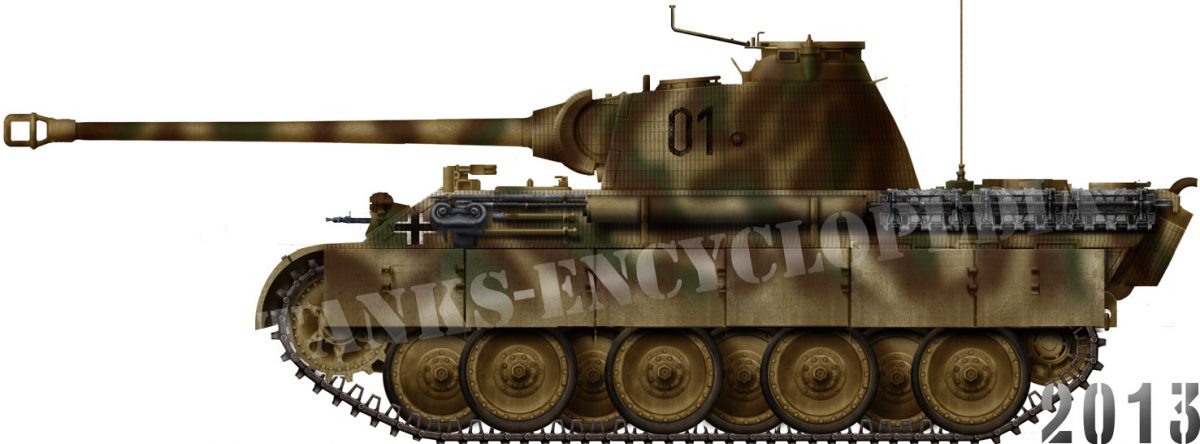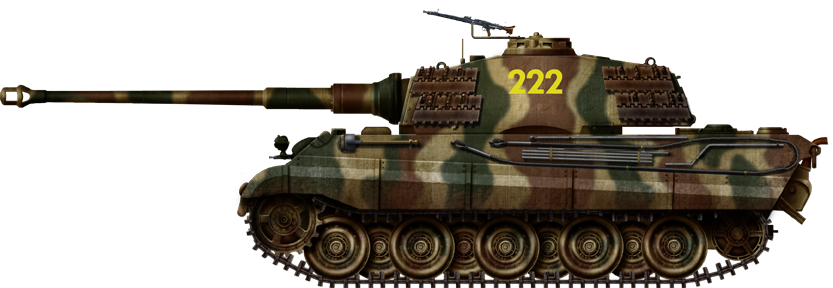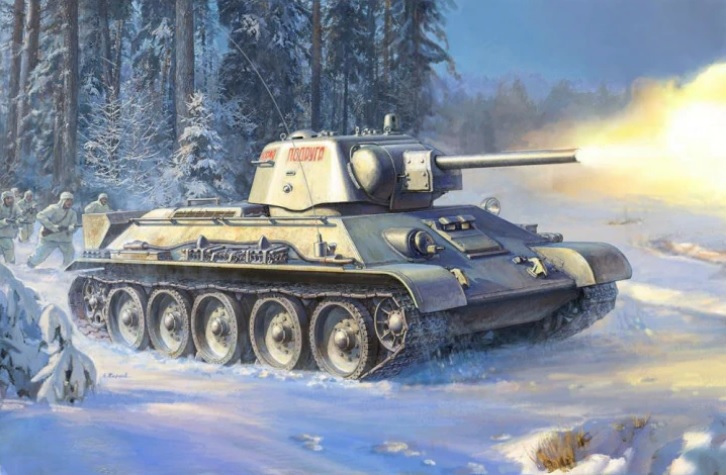Over the last week, we’ve been talking about the inexorible Soviet war machine that, once awakened, slowly ground the Nazis into the dirt. It did this through shear inexaustible weight of men, materiel, and machines. For this week’s blog post, I want to focus on the “war machine” part of that war machine, in particular Soviet tanks. Even more particularly, I want to focus on the T-34.
So sit down, grab a bottle of vodka, and put on some Sabaton; let’s talk about tanks.

Above: T-34, 85mm variant. Source: https://en.wikipedia.org/wiki/T-34#/media/File:Char_T-34.jpg
I admit that I’m doing this mostly because I got sucked down a WWII rabbit hole on Youtube a few days ago and ended up finding Nicholas Moran, “The Chieftain”. Moran is a former tank commander in the US military, and drove the M1A1 Abrams in Iraq. He is currently the head researcher for the online tank combat simulator “World of Tanks”, and he does videos climbing on and in various historical tanks. His experience as a tanker really adds a lot of color to his video, particularly in the areas of crew comfort, ergonomics, and maintenance (He really, really likes to talk about the ways various tanks tension their tracks. I’m not sure why exactly). I’ll throw his video on the T-34-85 (a 1944 update with an 85mm main gun) here, but I’ll discuss it further down the post.
History
This video by The Tank Museum does a better job of explaining the history and development of the T-34 than I could. If you have the time, I highly recommend watching it:
Evaluating the T-34
The T-34 was not the best tank of the war
History buffs like to debate about whether this tank or that tank was better, which was the most innovative, which would win in a one-on-one fight. In this kind of discussion, the T-34 tends not to perform terribly well. This is because strictly speaking, it was not a great tank, especially when compared to models that came out later in the conflict.
To start off, the design and construction of the T-34 was crude. The design was missing dozens of small improvements that would have made the crew’s lives substantially easier. For example, there was nothing holding the pins of the tracks together, so given enough time the pins would work loose and the entire track would fall off the tank. The Soviets’ solution? Instead of changing the design of the tracks they just welded a steel plate onto the hull that would push the pins back in if they came out too much. The parts of the tank often wouldn’t fit together properly, and those that actually did were held together by welds of notoriously poor quality. These poor joins were prone to leaks, and in heavy rains water would enter the vehicle and destroy electrical equipment and ammunition (Khlopov). The cast steel turrets of early models were weaker than the rest of the rolled steel armor, and were vulnerable to anti-tank fire. The rolled steel plates had their own issues, as they were prone to spalling (pieces of the inside of the armor breaking off when the tank is shot, causing shrapnel that bounces around the tank).
The T-34 was unreliable, and would break down often. Maintenance checks had to be performed often, and involved extensive manpower because getting at the mechanical components required removing bolted-on plates instead of easy to open hatches. Some operations required the entire turret to be lifted off with a crane to get at the needed access points. Nicholas Moran repeatedly jokes: “if your tank lasts 20 hours of driving… If you’re unlucky enough to last 50 hours of driving… But you probably won’t, so that’s okay”. Soviet metallurgy was dodgy at best in the beginning of the war, to the point where tanks were known to carry an entire spare transmission strapped to their backs in case.
Crew ergonomics was abysmal, especially in the original T-34-76 version. The turret was extremely cramped. It did not have enough room for a loader, so the tank commander had to perform that task on top of his commanding job. That was okay, as the T-34-76 lacked a commander’s cupola (the hatch the commander can stand up in and look out of), so he couldn’t really see much anyway. The bow gunner had no way of seeing out of the tank either, so he was essentially shooting blind. When the T-34-85 did eventually add a loader, he did not have a platform to stand on as the turret rotated, so he was at continual risk of losing a leg.
The T-34 was the best tank for the USSR
So if the T-34 was such a poorly designed, badly built, unreliable pain in the rear, why did the Soviets keep making it? Was it stubbornness? Stupidity? Lack of communication? No. The Soviets did look at building other tanks to replace the T-34, but never did. Ironically, the tank achieved its place in history because of all its problems, not in spite of them. Why was this? Because while the Soviets could have fixed all of the problems the T-34 had, by not doing so they were able to build enormous numbers of the tanks.
The unfixed track pins I mentioned earlier? Why bother going through all the effort of redesigning a major system of the tank and adding parts that have to be manufactured, when welding a simple wedge of steel to the hull fixes the problem. Elegant? No. Effective? Sort of, but sort of is all the Soviets needed.

Unreliable transmissions that break down after 30 hours of driving? Well, it’s not like the average crew is going to last much longer than that. And if you are lucky enough to drive your tank until the transmission fails, you just replace the transmission. Or better yet, just hop into another tank and send the first back to the factory.
All the components that are bolted on, requiring tools to remove components that could otherwise be taken off with a latch? While that is annoying for the crew and maintenance personnel, it is actually a feature instead of a bug. Bolt holes in plate steel are easy to manufacture, and bolts are cheap to make and install in a factory setting. An equivalent latch system would have significantly more parts and would cost much more. The Soviets did not have the time or money to waste on unnecessary luxuries like that. Besides, during some parts of the war the odds were good that the tank would be destroyed before any of those components would have to be removed for maintenance.
The Soviet’s work on the T-34 is a case study of what is known in engineering as “minimum viable product”. In order to produce as many tanks as humanly possible, they pared the T-34 down to the bare minimum of what could be considered a viable tank. Everything superfluous was discarded. Rubber on the wheels? Unnecessary. Driver’s seat? Do you really need one? Some factories didn’t think so. Making changes to make the T-34 a better tank was less important than making more of them. Accordingly, whereas the Germans were continually making adjustments and changes to their tank designs, the Soviets froze the T-34’s development. The only changes allowed between the German invasion and 1943 were ones that would speed production or decrease cost (War College).
The success of this effort can be seen in the numbers. Between 1941 and 1943, the amount of ammunition the T-34 could carry increased by 30%, the maximum armor thickness by 35%, and the range by 35- 112%. Over that time, the cost to build a T-34 literally halved, from 270,000 roubles to 135,000 (Zaloga & Grandsen). Over its production run, the armor thickness and the penetration power of the gun both doubled, while the cost per tank was cut in half. With this in mind, it is obvious that the Soviet tank industry mastered the art of building minimally viable, barebones tanks at minimal cost. And they did it at an incredible rate. By the end of the war over 57,000 T-34s and its variants had been produced (https://www.cs.mcgill.ca/~rwest/wikispeedia/wpcd/wp/t/T-34.htm).
The sheer volume of guns and armor this signified is hard to overstate. Only the American M4 Sherman was produced in anywhere near the same numbers (around 40,000 during the war). The Germans, with their mechanically complicated tanks, just could not keep up. Would the T-34 lose to heavy German tanks of the end of the war, like the Panzer V Panther, the Tiger II, or the monstrous 79 ton Jagdtiger? Probably. But the Germans only managed to produce around 6,000 Panthers (https://tanks-encyclopedia.com/ww2/nazi_germany/Panzer-V_Panther.php), and not even 500 Tiger IIs (https://tanks-encyclopedia.com/ww2/nazi_germany/Panzer-VI_Konigstiger.php).


Below is a recording of Hitler discussing just how outmatched numerically the German tankers were (starts at 7:13):
The Germans tried to build the perfect war machine. They continually innovated, building some of the most technologically advanced tanks of the war. They built massive, heavily armed and armored behemoths that are legendary. And they lost. Why? Because while they were pursuing perfection, constantly changing the designs of their tanks and disrupting factory production, the Russians and US picked designs that worked and built tens of thousands of them.
So no, the T-34 was not the best tank of the war. But most historians would argue that it was best tank for the Soviet Union. The Soviets lost 20,000 tanks in Operation Barbarossa (War College), and needed to make up that deficit. They needed something they could produce by the thousand, quickly and cheaply, and in factories that had recently been transported hundreds of miles over the Ural Mountains. They didn’t need a tank that could drive for hundreds of miles or operate for years on end. They needed a stopgap that they could build and transport by rail to the battlefield, which would have a decent chance of killing a few Nazis before being destroyed. The T-34 was that tank, and it did its job well. By 1942, over 1,200 were being produced per month. Though 40,000 T-34s were knocked out during the war, the endless tides of Russian steel were enough to save the Soviet Union. It is for that reason that the T-34 occupies such an important place in history, and in the Russian consciousness.

References:
- Inside the Chieftain’s Hatch: T-34-85, Episode 1 https://www.youtube.com/watch?v=BRtj_TSOHjw
- Inside the Chieftain’s Hatch: T-34-85, Episode 2 https://www.youtube.com/watch?v=rTnS0XS2al8
- Zaloga & Grandsen (1984:113, 184), Harrison (2002:181), KMDB (2006).
- Major-General of Tank Armies, Khlopov, 2nd Department, Evaluation of The T-34 and KV Tanks By Engineers of the Aberdeen Proving Grounds USA, Main Intelligence Department of the Red Army (n.d.) via The Russian Battlefield, retrieved April 11, 2020
- Tank Chats #68 T-34 | The Tank Museum https://www.youtube.com/watch?v=8dUAs40ymag
- https://tanks-encyclopedia.com/ww2/nazi_germany/Panzer-V_Panther.php
- https://tanks-encyclopedia.com/ww2/nazi_germany/Panzer-VI_Konigstiger.php
- https://www.cs.mcgill.ca/~rwest/wikispeedia/wpcd/wp/t/T-34.htm
I learned so much from this post. Thank you! I will confess that Sabaton has never been on my play list, but the chorus of that song is a real earworm and I am now putting Sabaton pretty high up on my favorite Nordic music groups — right behind Laika and the Cosmonauts, which was the BEST Finnish surf rock group of all time.
But seriously, I really appreciate your insight on the T-34 and why it was indeed the best tank for the Soviets. The concept of the “minimally viable product” works in other contexts as well, I think. For example, in the early years of the space program, the Americans spent a ton of money designing pens that would work in zero-gravity so the astronauts could write while floating upside down. The Soviet solution was to use pencils. Another example: Corrosion inhibitors are crucial to the production and transport of oil in the US (corrosive chemicals are mixed in with crude oil when it comes out of the ground and the refinery process gets rid of them). In the US there are many specialized service companies that developed and sell corrosion inhibitors which prevent leaks in pipelines and prolong the life of equipment and machinery. We tried to develop a market for these chemicals in the Soviet Union, which of course is a big oil producer. The Soviets’ response was something like, “well, we’re also a leading steel producer, so we’ll just replace corroded parts when we need to. Don’t have an EPA minding the store, so who cares if the stuff spills? And why do we want to develop a need for a specialty product from the West, when we can just keep doing what we’re doing?”
LikeLike
I’m glad you liked the song! The Russians seem to be the epitome of “the engineering hours to redesign this in a more elegant way are more expensive than the benefits would be, so why bother?” I’ve run into that practical, function over form, and “if it ain’t broke” mentality among a lot of old engineers when I did internships in factories. But the Russians seem to have taken it to a cultural art form.
LikeLiked by 1 person
I really enjoyed reading your post. I find the posts about war and weapons the most fascinating. I also listened to the song while reading and I enjoyed the intensity it added to the post. I think it is funny how the tank seems so “Russian” in the way of it being clunky, unreliable, but still their most effective war machine. Your post was incredibly detailed and I appreciate the information and effort you put into it!
LikeLike
Thanks! The Russians definitely do have a certain way of approaching design
LikeLike